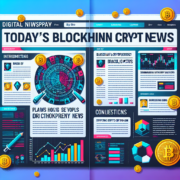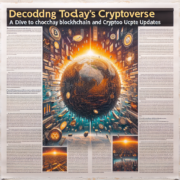Abstract
Welcome to the third edition of The Bomb Report, a report published every time 1% of the total supply is burned! In the last report, we discussed key events since the inception of the Bomb token, including listings on various exchanges and portfolio trackers, interviews that put the spotlight on the Bomb token in front of other communities, and % burned milestones reached. Additionally, we investigated key metrics, some of which are unique to hyper deflationary assets, and determined any correlations that we could between them. In this edition, we will investigate how the Bomb token initiated the emergence of the hyper deflationary asset class within the cryptocurrency community, cover new developments in the Bomb brand (BOMBX), update old charts, and provide a few new ones. We have a lot to cover in this report, so settle in as we dive into the evolution of the Bomb token social experiment over the last couple of months.
Emergence of the hyperdeflationary asset class
The successful launch of any product will usually be accompanied by derivative products that attempt to capture some level of similar success. This phenomenon is not unique to cryptocurrency by any means. In fact, who hasn’t purchased the off-brand of something at some point in their life? Many cryptocurrencies sprang up in the years following the Bitcoin genesis block. Sometimes these derivative objects were identical to Bitcoin, while some may have provided tweaks, such as changing the hashing algorithm. Whether you are a fan of Bitcoin or not, it is what started the asset class, and to some degree, any cryptocurrency created these days owes some of its inspiration to Bitcoin.
Within the cryptocurrency asset class, there are subclasses that exist such as privacy coins, cross-border coins, and instantly transferable coins. For privacy, the typical go-to is Monero (XMR), while instant and scalable is often associated with projects like Nano and XLM. The genesis of Bomb token led to the emergence of the hyper deflationary subclass within the cryptocurrency asset class. Bomb token was never marketed as anything other than a social experiment for studying the tokenomics behind the coin. The question probed is whether or not a hyper deflationary coin can act as a store of value given the reduced token velocity to mitigate on-chain burns. Data collection on this project will be ongoing for years, but initial results are truly remarkable and will be presented later in this report.
Not only has the Bomb token inspired a new asset class, but it has also inspired a new method for bringing an idea to market. This idea is centred around freely distributing a majority of coins representing an idea, and letting the market determine its value. Thus, in the same manner, that you can find dozens of hyper deflationary coins now, you will also find that most are distributed in almost an identical manner that Bomb tokens were distributed. Of course, why would anyone expect distribution to be any different? A quick glance at Bomb token’s history will show its immense success in only a few short months. For any project trying to emulate this success, they will likely only change 1 or 2 parameters, such as the burn rate and whether or not to include decimals.
Keeping track of all of the different hyperdeflationary assets is not for the faint of heart since it seems like a new one emerges practically every day. The last headcount I took to put the number at 30+ but I imagine that number is now outdated. One of the key elements that set Bomb token apart from the rest of the hyperdeflationary assets is not only that it was first, but the high level of transparency from the beginning of the project. The developers behind the Bomb token identified themselves before the final contract was even created, as well as had their code audited by several third parties. A certain degree of scepticism must be placed on other projects in which the core team does not identify themselves or have their code reviewed by an outside source.
Notwithstanding these cautionary statements, Bomb is the token example of how to launch a successful idea with absolutely zero up-front capital. In fact, as the Bomb token community, we should encourage others to pursue their own ideas, as we have shown what the power of a strong community can do!
BOMBX
While many of us might assume that the launch of the Bomb token was seamless and its journey to a $10,000,000 market cap relatively easy, this is strictly not the case. The code development was in the iterative process that required many sets of eyes and expertise. The development of the community was fostered through several different channel-specific topics, as well as weekly Bomb campaigns to engage the community. Sorting out the bad actors during the initial distribution was also challenging, as many people tried to game the system. Notwithstanding all of these limitations, the developers behind the token were still able to overcome them and successfully launch their idea into the world. Given the challenges they faced and recognizing that others would likely face the same ones, they had an idea!
From here, BOMBX was born, an exploratory and blockchain-based incubator focused on launching innovative, original, and experimental ideas into the decentralized world. Where did the name BOMBX originate? The idea is that “X” is being solved for, which is the undiscovered, underdeveloped, and unresolved obstacles within the blockchain industry. In fact, similar projects exist in the centralized world, such as Y Combinator. However, Y Combinator only accepts projects twice a year and early investors typically must sit on their investment until an initial public offering (IPO) or the company is acquired.
The BOMBX incubator is setup to help start-ups succeed by giving them access to resources they would not otherwise have, and by keeping the pipeline of new project applications open 24/7. While the BOMBX network will start as a centralized incubator, the end goal is for it to become a fully decentralized one in which the BOMBX community decides which projects are approved. The nice aspect of this approach is that an idea can be evaluated by the community before too much capital is spent on investing in that idea.
A psychological phenomenon that has been studied is that if a person receives recognition for something before they do it, they are ultimately less likely to actually accomplish what they were being recognized for. If I tell my friends that I am going to go run a marathon and they all congratulate me on all the hard work I would have to put in to accomplish such a feat, then I may already feel the satisfaction of their approval for the task and ultimately never carry it out. In the same manner, companies that receive millions from an ICO can sometimes wither away – after all, it can be hard to have the motivation to work if you have millions sitting in the bank account.
The BOMBX incubator takes a unique approach to capital. Instead of taking equity from the company, BOMBX accepts native tokens from each project, and these native tokens may be subsequently distributed to the BOMBX community. By obtaining an initial market valuation, this can determine if all the work needs to go into making a project succeed. We know that most start-ups fail, but oftentimes they fail because their product never had a market need. Why not ask the market first before spending years working on a product?
A great example of asking the community first is the team behind the Parachute token, a partner of Bomb token. When Parachute tokens were introduced to the asset class, the developers asked what people wanted. The community told them they wanted a social wallet that has now gone viral and has been launched into 100+ telegram channels.
In order to get approved for the BOMBX incubator, a project idea must first be submitted. From there, a screening will take place, including technology review, team, timeline, and tokenomics. Projects approved will then be given the resources they need to succeed, including consulting, liquidity, and access to the BOMBX community. After all, obtaining an active community is one of the biggest pitfalls from great ideas ever reaching their true potential.
The full article can be found here.
By BENJAMIN J. COWEN, PHD
Follow him on:





Comments